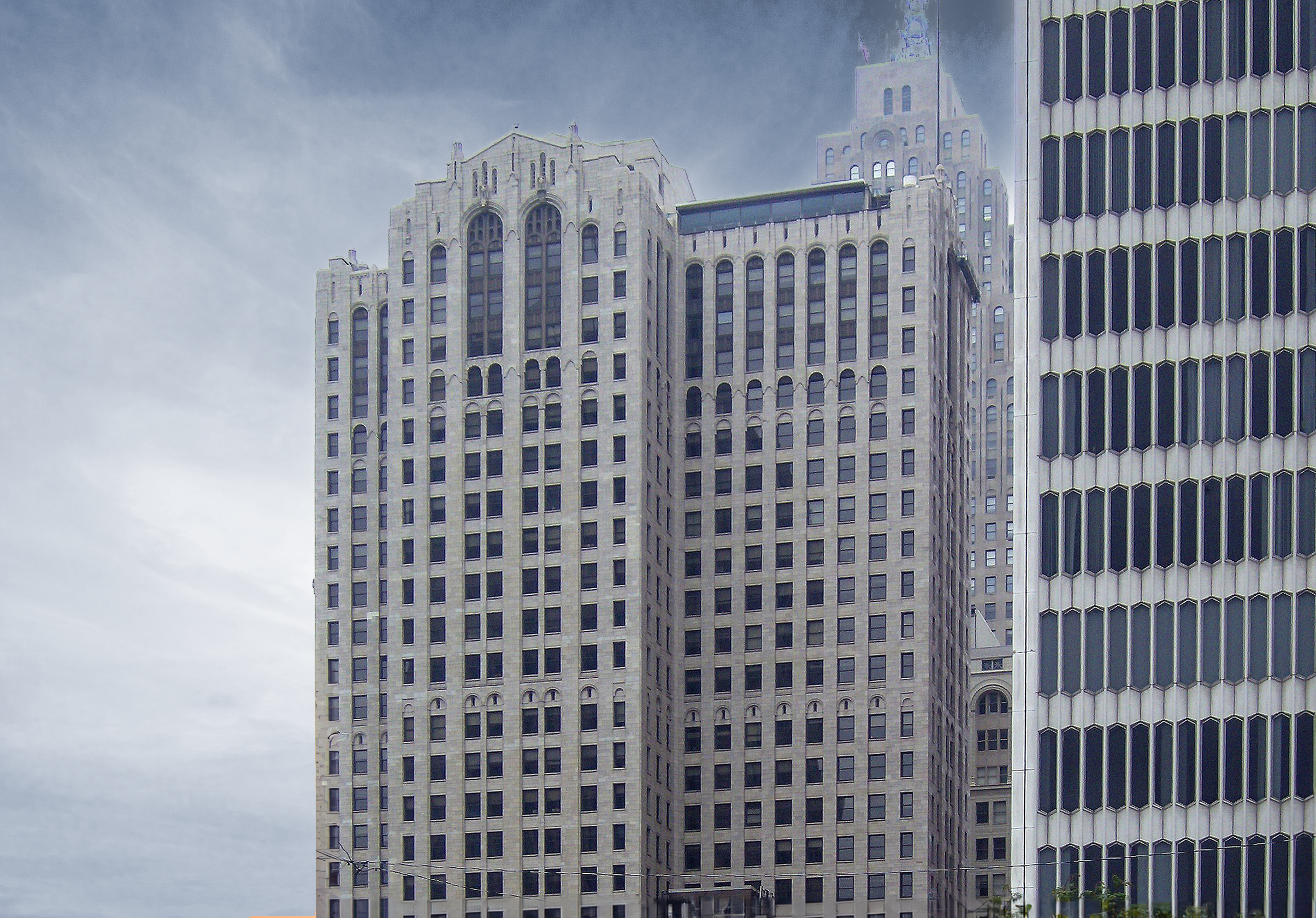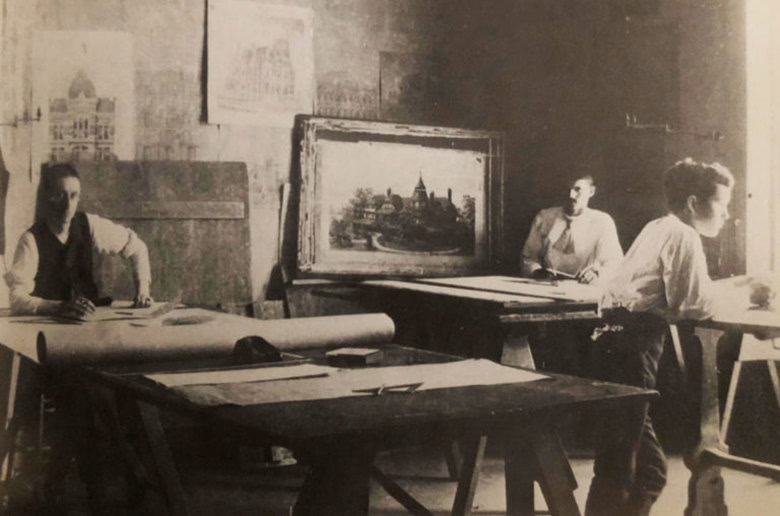The Buhl Building is a Neogothic skyscraper designed in 1923 by Smith, Hinchman & Grylls, and built between 1924 and 1925 in Detroit, MI.
Its precise street address is 535 Griswold Street, Detroit, MI. You can also find it on the map here.

The Buhl Building is a Neogothic skyscraper designed in 1923 by Smith, Hinchman & Grylls, and built between 1924 and 1925 in Detroit, MI.
Its precise street address is 535 Griswold Street, Detroit, MI. You can also find it on the map here.
Smith, Hinchman & Grylls was the architecture firm in charge of the architectural design. But there was also one other architect involved, as far as we know. We are talking about Wirt C. Rowland.
The firm was founded in 1853 and under their new name “SMITHGROUP” is the oldest architecture and engineering firm still operating in the US.
During its early days, it played a significant role in shaping the architectural landscape of the city of Detroit, and theirs are some of the city’s most iconic buildings, many of their buildings have been designated as historic landmarks, becoming part of the city’s identity.
Their initial work took inspiration from the Beaux-Arts and other revival movements, however, they were quick to evolve into Art-deco and modernism when those movements were still young, and later on into sustainable design and new technological advances.
Over more than a century of activity, their designs aren’t limited to Detroit anymore, and you can find their buildings all over the country.

That being said, architecture is a complex discipline involving many professionals from different fields, without whom this building would have not been possible. We will surely be leaving out a lot of names here, but here is a list of the people we do know also played their part in making the Buhl Building a reality:
The Buhl Building can be categorized as a Neogothic building.
The Neo-Gothic style, also known as Gothic Revival, emerged in the United States during the late 19th century, taking inspiration from the Gothic architecture found in Europe from centuries prior.
The Gothic Revival movement took elements characteristic of the Gothic buildings, such as pointed architect, ribbed vaults and flying buttresses, and applied them to newer buildings, even those belonging to typologies that did not exist during the original Gothic period, such as skyscrapers.
Neg-Gothic buildings usually feature pinnacles, gargoyles and other decorative elements that emphasize the verticality of the structure, and include stonework that features the craftsmanship of skilled artisans of the time.
The Buhl Building was completed in 1925. These were the late days of the Neogothic movement, which had been around for almost 200 years at the time.
Art-deco would soon take over US architecture, and therefore, even though Smith, Hinchman & Grylls didn't venture into what was cutting edge in terms of style at the time, and took instead a more conservative approach to the design of the Buhl Building, it is possible that the design already started showing some traits that would later become characteristic of the art-deco movement.
The Buhl Building reaches an architectural height of 367ft (112m), with the last accesible floor being 351ft (107m) off the gorund. It has a total of 29 floors, 27 above ground and 2 basements, served by 12 elevators. In total, it has a built-up area of 399,997 sqf (37,161m2) offering 389,998 sqf (36,232m2) of usable space.
Ever since opening its doors to the public in 1925, the Buhl Building has mainly been used as Commercial space.
The Buhl Building uses a frame structure made of steel columns and concrete slabs.
A frame structure uses a combination of beams and columns to sustain the building's weight. The walls in this case are non-load bearing, which allows for more flexibility when distributing the interior spaces.
The facade is a non-load bearing masonry facade. This type of facade became common during the period when buildings, especially taller ones, transitioned from load-bearing wall systems to frame structures.
Frame structures allowed facades to be independent from the building's frame, enabling the use of lighter materials and larger openings. However, it took some time for architects to incorporate these new posibilities into their designs, and so for a while they simply replicated the look and feel fo buildings people where used to seeing.

From an aesthetic point of view, the facade features a granite base of only half a floor high and limestone from there on. The main entrance is set back in an arched recess with a blue mosaic-tiled ceiling.
Other materials found at the Buhl Building include, marble, used in the lobby's floor and walls, and gold leaf, found in the lobby's coffered ceiling, decorating the elevator doors and in some other ornamental details.